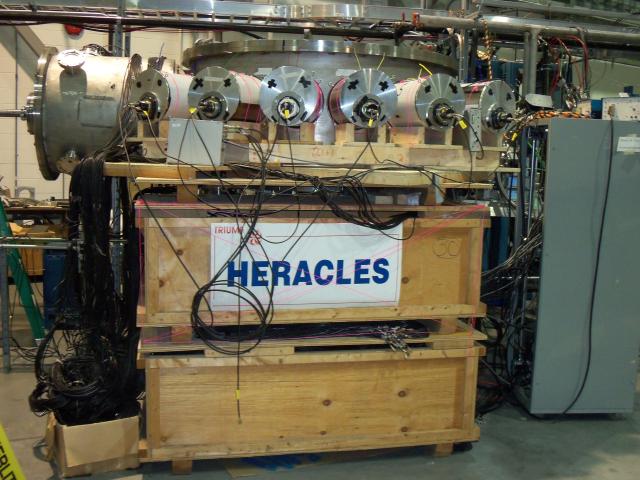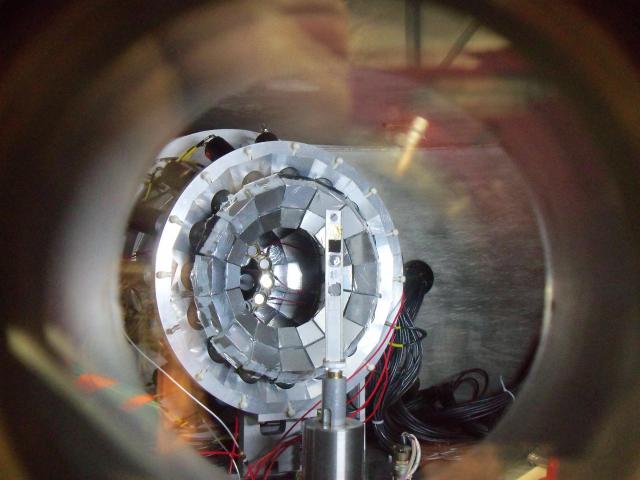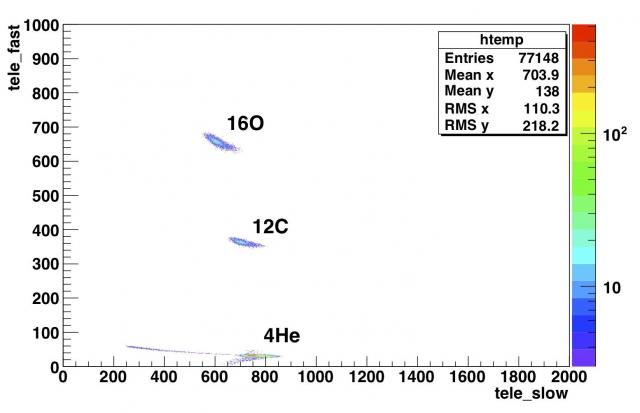Results are coming in for HERACLES (HEavy-ion Reaction Array for the Characterization of Light Excited Systems)! The experiment, located in ISAC-II and overseen by Rene Roy from Laval University, is in the stages of analyzing the data collected during its successful run in July 2011. The main objective of this first experiment was to study the differences in nuclear symmetry energy (referred to as the nuclear asymmetry term in the nuclear potential) in projectile fragmentation of elements with different neutron-to-proton values (N/Z). Shedding light on the effects of nuclear reactions in various isotopes may in turn help us understand the reactions that power stars and produce the chemical elements. The experimental process began with carbon and aluminum targets being bombarded by a beam at 9.23 MeV/nucleon; in the case of HERACLES, the beam was composed of either the radioactive Sodium-25 or the stable Magnesium-25. As the beam entered the target and shattered the nuclei, projectile “fragments” emerged, sending charged particles (e.g., protons) scattering outward from the point of interaction. Detection came into play next, and HERACLES is in essence an advanced scintillator—a type of detector that emits light when hit by a charged particle. HERACLES is equipped with a total of 78 different detection systems mounted between 3 and 46 degrees, including scintillating crystals or plastic, surface barrier detectors and neutron detectors outside the scattering chamber. The energy available in this first experiment was too low to produce sufficient neutron rates. The detectors were segmented to give directional information and layered to provide timing information. As is often the case in physics, the road was not without bumps. The main challenge in the experiment was to get all the detectors running correctly, especially since they had undergone a move from Texas A&M to TRIUMF in 2003. Despite the challenges, Rene Roy was happy to mention that “I am thankful for the great operations support at every step; the general services like safety controls and mechanics were very helpful”. To answer to the question of what is next for HERACLES - results! The team expects there to be a difference in isotope distributions produced by the two projectiles because of the different in N/Z ratios. They will look into the data to see what actually occurred, with the first step in data analysis being to identify the particles in each detector and calibrate them in energy, subsequently allowing comparisons of energy and particle type among the sodium and magnesium beams. While it is hard to predict the importance of any one experiment before the data is fully analyzed, according to Rene Roy, “This is the first experiment in that energy range with a light radioactive beam like Na.” With that in mind, and with the team’s sights set on potentially tackling the comparison of Neon-21 and Sodium-21 next, HERACLES will be an experiment to watch for some time to come!
Written by Lena Sitnikova, Outreach Assistant | |
|
| ||
A spectrum of the elastic scattering on a gold targer for three simultaneous calibration beams at 6.365 MeV/nucleon from ISAC-II (4HE, 12C and 16O) taken with a DE (Si) vs E (CsI(T1)) telescope. |
Canada's particle accelerator centre
Centre canadien d'accélération des particules
Centre canadien d'accélération des particules



